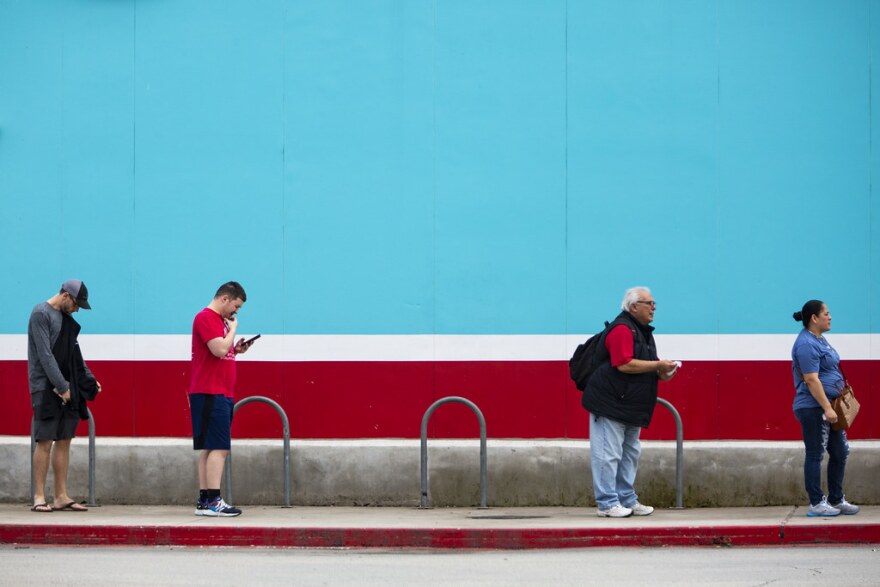The first thing you should know about contact tracing is that it’s time-tested. It’s been around for a long time — one of the original weapons in the public health arsenal for fighting infectious diseases. It was used before vaccines. Before antibiotics. Before we knew most of what we know now about infectious disease.
It’s still used routinely for things like tuberculosis and sexually transmitted infections.
It starts with a known or suspected case.
“We get in contact with [the patient] to understand their recent interaction with others,” says Darlene Bhavnani, a clinical epidemiologist with Dell Medical School at the University of Texas at Austin.
Bhavnani has been making these kinds of calls for the past few weeks as part of the team of a dozen or more people doing contact tracing for COVID-19. That team is ramping up to as many as 200 tracers to deal with the expected increase in cases in the coming weeks.
The tracing begins with a phone call to the patient. The tracer will check to see how they’re feeling and make sure they’re self-isolating. Then they’ll try to figure out the exact date when the patient started feeling bad.
“That date is really important, because that helps us to understand when [they] might have been infectious,” says Bhavnani.
But there’s a problem when it comes to COVID-19.
“Our greatest challenge here is that people can become infectious before they present with symptoms,” says Bhavnani. So people can be walking around — not knowing they are sick — and spreading the virus to other people.
For the purposes of contact tracing, Bhavnani says they take the date someone started feeling bad and go back 2 days. Then they walk the patient through everything they did over those days.
“We usually go chronologically,” Bhavnani says. “So ‘what did you do on Monday? Walk me through what you did. What did you do today? Who were you with? How long were you with them? What were you doing when you were with them?’”
Mostly, they’re looking for prolonged contact — more than at a grocery store checkout or passing on the street.
“We're most concerned about those contacts that have been potentially face to face or for more than just a few minutes,” Bhavnani says.
"If you can't identify the cases, then you can't identify the contacts."
So they make a list of those contacts and try to contact them to let them know they’ve potentially been exposed — and if they’re feeling ill, to get them tested and repeat the tracing process with them. The point is to try to cut off transmission — or at least to contain it.
A few problems come with COVID-19, though.
“The challenge that we face with COVID is that its symptoms are so similar to any number of other diseases that the only way we have to definitively diagnose it is with a very sophisticated laboratory test,” says Marilyn Felkner, a clinical assistant professor at UT’s Public Health program with decades of public health experience.
The lack of widespread testing and the fact that some people, though infectious, show no symptoms at all, means many cases may not be identified at an early stage — or at all.
“If you can't identify the cases, then you can't identify the contacts,” says Felkner.
So tracing only works in connection with lots and lots of testing.
“If you wanted perfect contact tracing, you would have to test everybody — symptomatic or not. In this situation, clearly that's logistically impossible,” Felkner says.
Testing is increasing in Texas, but still lags far behind. As of Monday, Texas has a rate of 459 tests per 100,000 residents. But other big states have much higher rates. New York has a rate of 2,459 tests per 100,000 residents. California is slightly ahead of Texas at 483 tests per 100,000 people, according to data from the COVID Tracking Project website posted Saturday.
Short of a vaccine, though, a major ramp-up in both testing and tracing will be needed before distancing restrictions can be lifted without risking another steep increase in coronavirus infections.
Got a tip? Email Matt Largey at mlargey@kut.org. Follow him on Twitter @mattlargey.
If you found the reporting above valuable, please consider making a donation to support it. Your gift pays for everything you find on KUT.org. Thanks for donating today.





